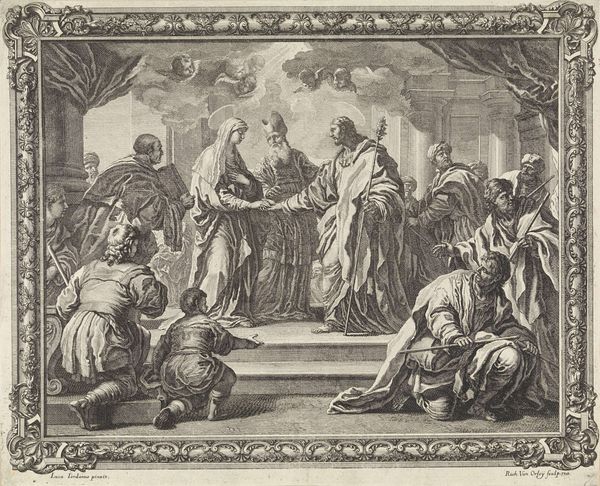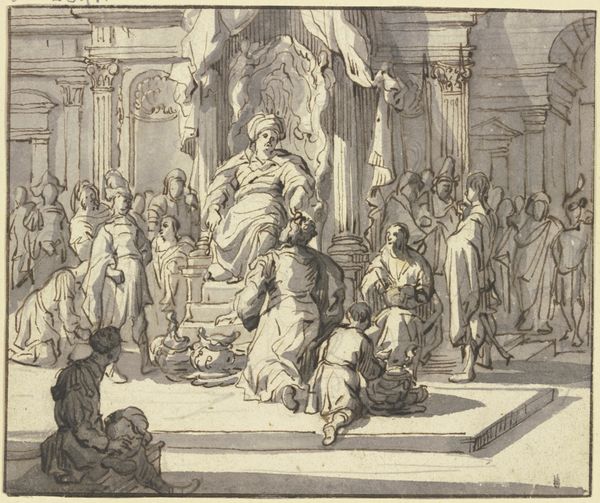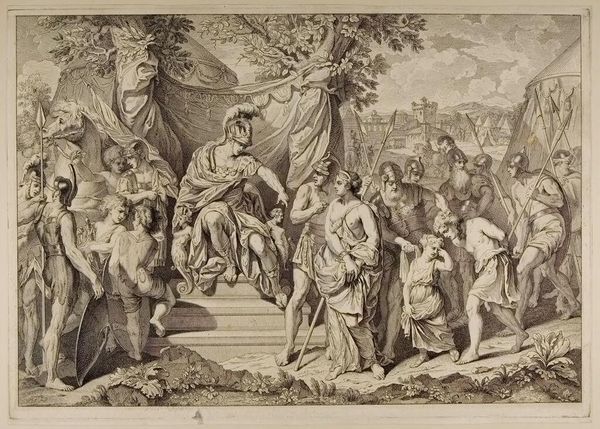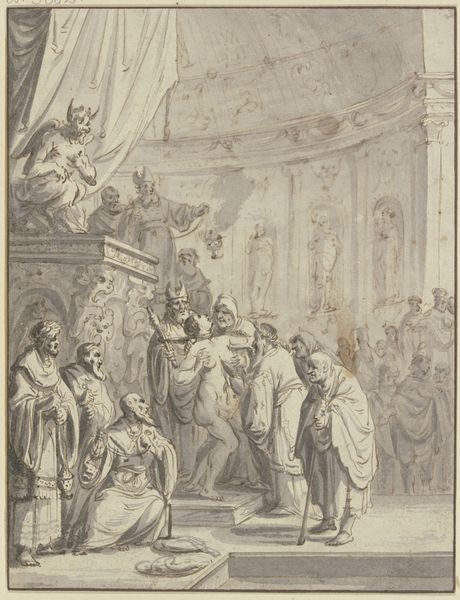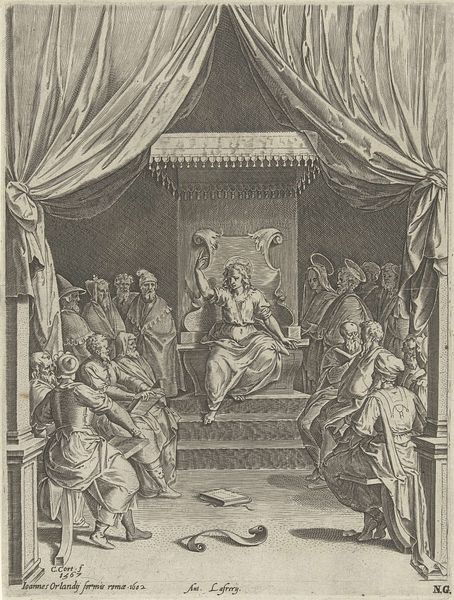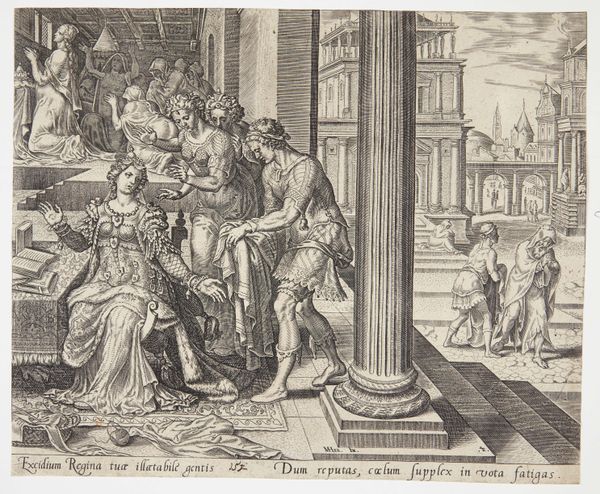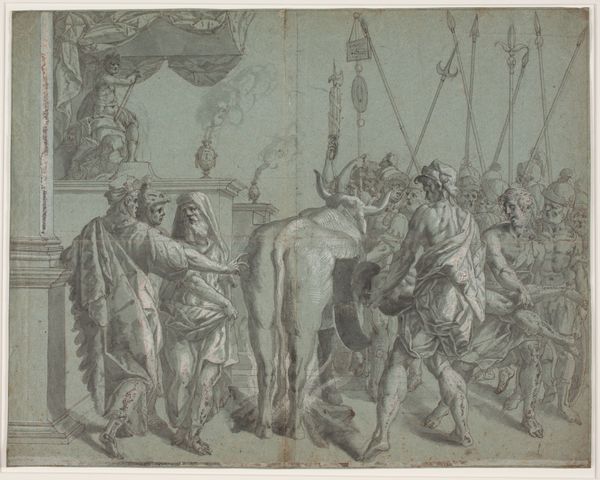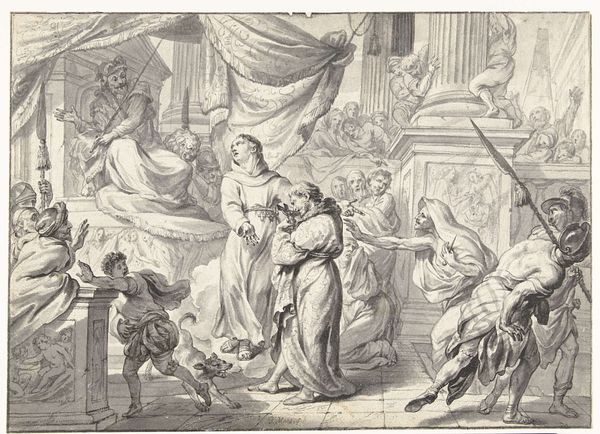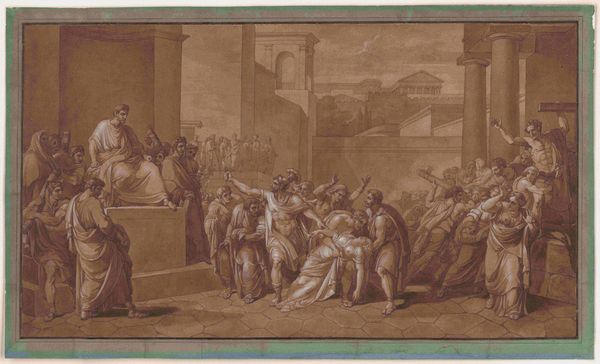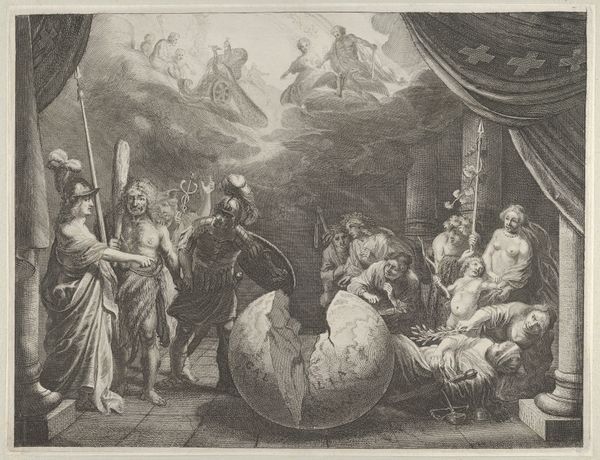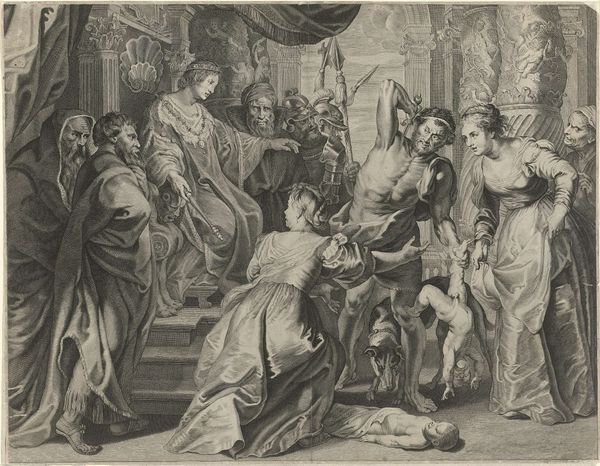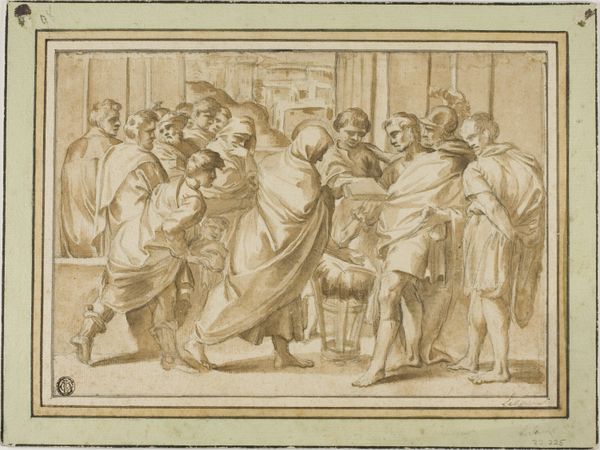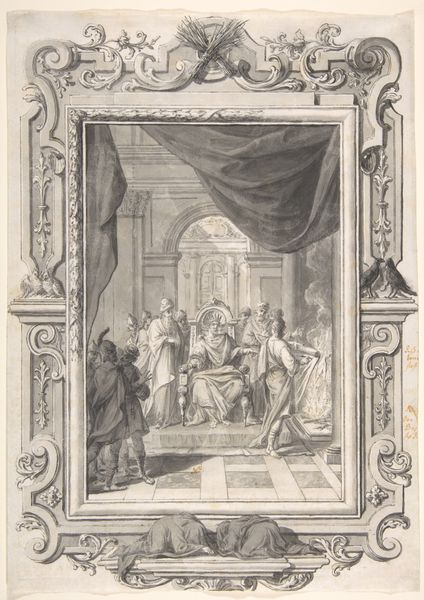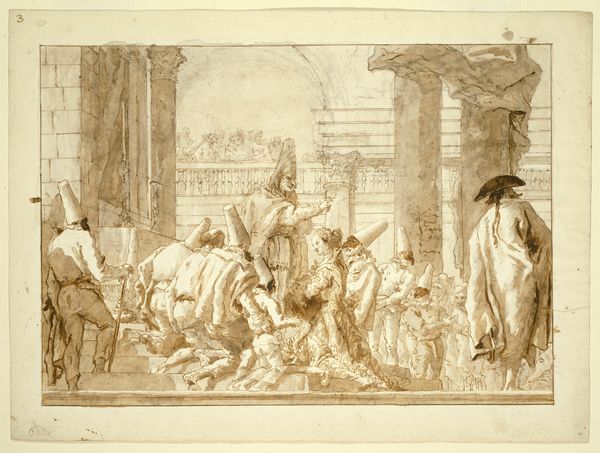
textile
#
portrait
#
allegory
#
narrative-art
#
baroque
#
textile
#
figuration
#
oil painting
#
history-painting
Dimensions: height 367 cm, width 551 cm
Copyright: Rijks Museum: Open Domain
Editor: This textile artwork, "Orestes en Pylades voor Iphigenia" by Pieter de Cracht, likely made sometime between 1648 and 1662, strikes me with its sheer theatricality and intricate detail woven into the scene. It almost feels like stepping into a stage production. What kind of social commentary might have been woven into the very fabric of a piece like this? Curator: Well, that's an astute observation about theatricality. Considering its historical context, tapestries like these served as potent symbols of power and cultural capital. These weren't merely decorative; they visually broadcasted the patron's knowledge of classical narratives and their allegiance to certain ideologies. De Cracht's work presents a specific rendition of the Greek tragedy; it's interesting to consider which segments of the story were deemed fit for display and which were purposefully omitted in that historical context. Editor: So, the choice of this particular scene speaks volumes? It seems like more than just telling the story; it is a kind of branding? Curator: Exactly. The political undertones are always there; How does this reinforce social order and values within elite circles, even in its composition, staging, and intended audience? It also tells you something about cultural networks and how imagery and the interpretation of classical mythology became fashionable ways to demonstrate erudition, taste, and power, all packaged into the home, ready to be flaunted during social events. It also tells of art's public role and the artist’s relationship with the state. What do you make of that column on the right, or of the people observing the scene from above? Editor: That’s a great question...I think I have a better understanding of art as embedded within political, economic and cultural contexts, after speaking with you. Curator: And I am pleased that our reflections have spurred you to consider art as inseparable from its sociopolitical world.
Comments
No comments
Be the first to comment and join the conversation on the ultimate creative platform.
